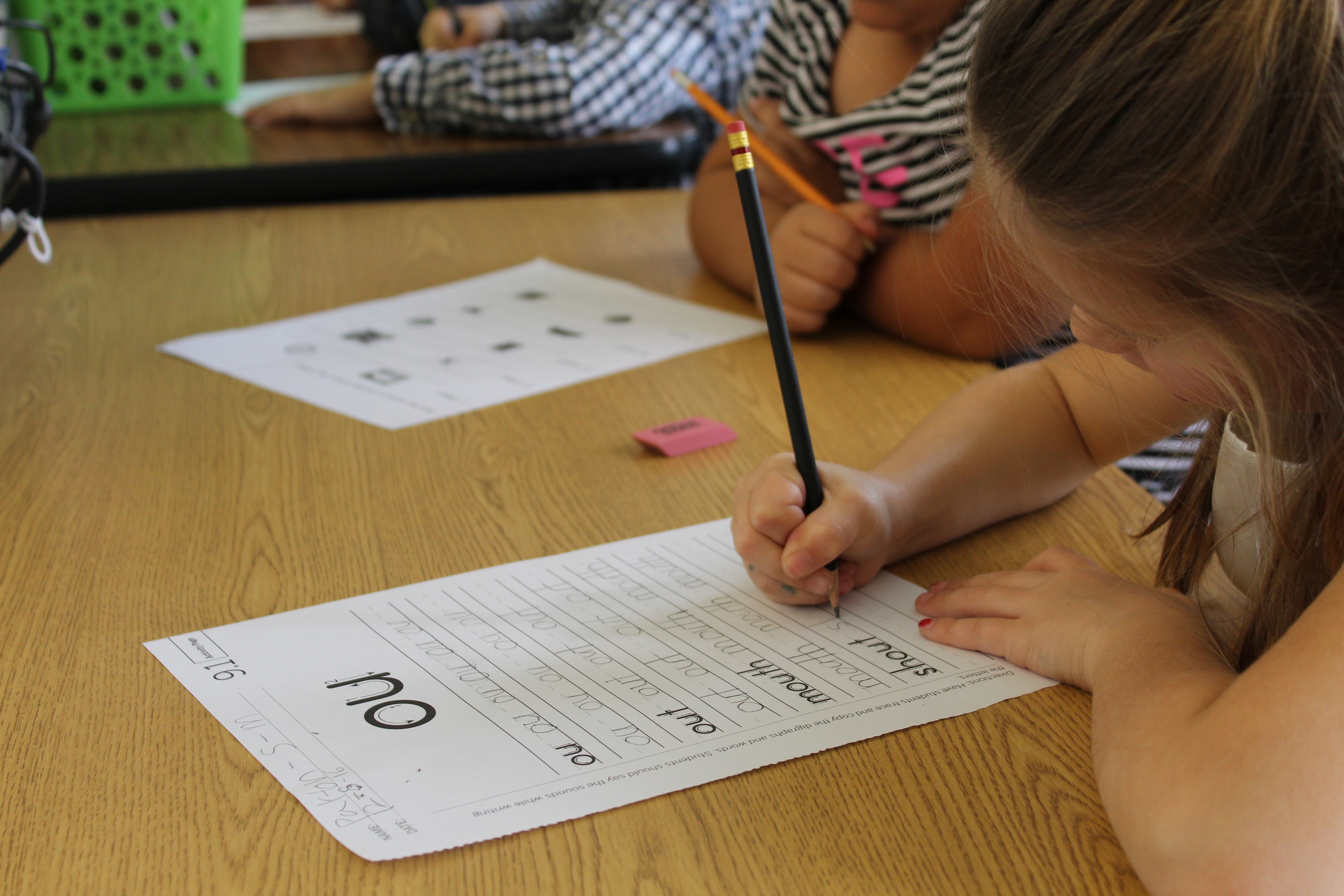It is not enough to ask whether a reading program has explicit phonics instruction. Research shows that phonics instruction is not simply present or absent, but rather exists in degrees. What research suggests is that the degrees may matter—substantially—to children’s outcomes. Because not all phonics programs are created equal, we developed a brief overview to help you identify strong phonics instruction.
Why is explicit phonics instruction important?
There are 44 sounds in the English language, but 150 ways to spell them. By contrast, in Spanish, the symbol p always stands for the /p/ sound as in palabra (word).
In English, when you see a word beginning with p, it could represent the /p/ sound, but it could also represent /f/ as in photo. Or it could be silent as in pterodactyl. When all the sounds and sound-spellings in the English language aren’t taught explicitly, children aren’t given the tools to become fluent readers.
According to the research, explicit phonics instruction has important, lasting benefits to children’s reading accuracy, particularly for English language learners and children struggling to learn to read.
Feature 1 of Strong Explicit Phonics Instruction:
All 44 sounds and 150 spellings are explicitly introduced and taught, by the end of Grade 3.
When you evaluate, ask:
- Does the program have an explicit scope and sequence that identifies what sound/spellings correspondences are taught and when ( i.e., grade level, unit, and lesson)?
Feature 2 of Strong Explicit Phonics Instruction:
The introduction of sounds and spellings follows a systematic pattern—i.e., it builds logically—and allows students to build on what they’ve learned.
When you evaluate, ask:
- Does the scope and sequence begin with teaching the least ambiguous, most reliable, and most frequent sound-spellings first?
- Are ambiguous, less reliable sound-spellings (i.e., Tricky Words) introduced gradually and with appropriate scaffolding?
Feature 3 of Strong Explicit Phonics Instruction:
Instruction is appropriately scaffolded—with each skill acting as a building block for the next, allowing teachers to monitor progress at every step along the way.
When you evaluate, ask:
- Does the program move into phonics only after ensuring students can discriminate individual phonemes (phonemic awareness)?
- Are sound-spellings introduced one at a time, so teachers can more easily tell identify when students have mastered them and which have not, and provide support at the right time, to the right students?

.png)

